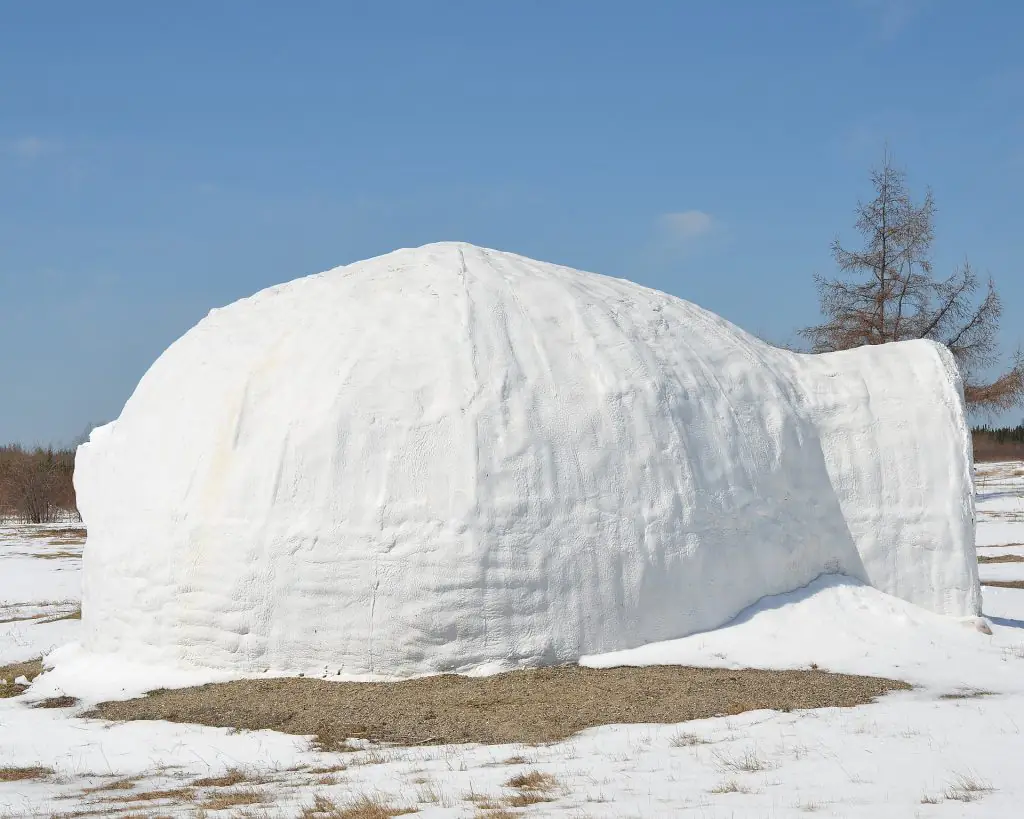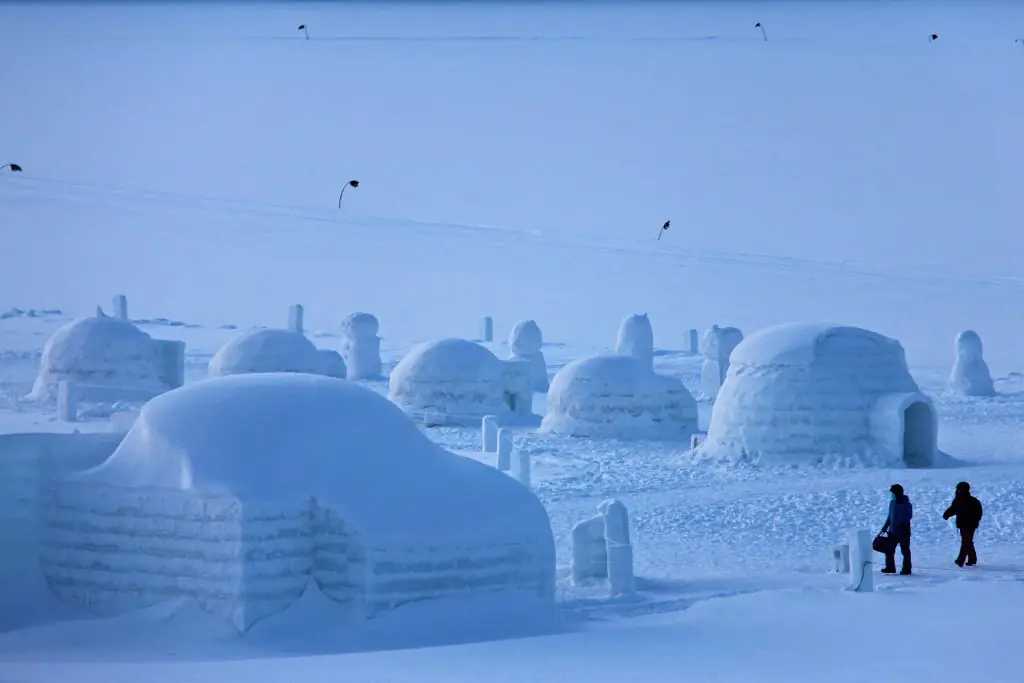Igloos

The Arctic is one of the coldest environments on Earth. Winters are long with few hours of daylight. The Inuit people must adapt to this extreme climate. They need thick, warm clothing made from animal skins and furs. They make boots, hats and warm jackets called anoraks. The Inuit people build sturdy shelters to protect themselves from the harsh winds and bitter cold.
The Inuit word for home is “igloo.” Igloos are used as quick shelter to protect oneself and their family by trapping body heat in the mostly enclosed space. The size of the igloo depends upon the size of the base, but the shelters can often hold a family inside, and someone who is experienced in the art can create an igloo in less than two hours! During the summer, the igloos are made from a wooden frame with animal skins and whale bones. During the winter, however, igloos are made from blocks of ice!

Originally, any snow used in creating the igloo was carved out of bone, but now more modern tools are used. Inuit people carve large blocks of dry, hard snow. First, they place a circular ring of blocks on level ground. The second row of blocks are tilted slightly inward. As each row is stacked, the walls grow taller, and the blocks begin to arch together. The structure is a dome. Finally, a key block is placed on the top. The builders cut a hole in this key block for ventilation. This hole allows air and smoke from a fire to escape.
The entrance into the igloo is a tunnel. This prevents warm air from escaping and cold air from entering the structure. The doorway is small, and one must crawl inside. The blocks of ice act as insulators. There is gradual thawing on the inner walls. But, when the people leave the igloo to go hunting during the day, the hardened snow refreezes into ice. This thawing and refreezing actually strengthening the blocks.

